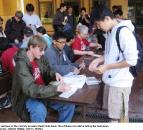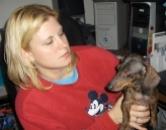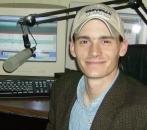Careers begin with Ham Radio
On Friday, November 4, 2011, a record 114 Electrical Engineering freshman students from the California Polytechnic State University attempted their FCC amateur radio technician-class license exam. A record-breaking 96 students succeeded in passing the official exam and join the next generation of Ham Radio Operators in the US.
Hosted by the Cal Poly Amateur Radio Club (CPARC), this event broke its previous record of 62 new licensees, set earlier this year on Oct 1, 2011
Getting an amateur radio license is the first step towards many career opportunities in the communications industry, from engineering UAVs, integrating Wi-Fi on the Amazon Kindle, to creating 4G cell phone networks, to designing communication subsystems on DirecTV satellites. CPARC members are regularly learning about radios through retuning filters on radios, building directional antennas for transmitter hunts, and putting together an emergency vehicle tracking network for the Wildflower Triathlon using two dozen radios and GPS units, digital repeaters, and internet gateways.
More information about the club can be found at www.w6bhz.org
Amateur Radio is a great way to stay current on the latest trends in data communications. Most people in IT nowadays are basically installing software written by others and rarely get a chance to see how things work under the covers. Amateur Radio often provides the hands-on opportunities,
Will McCutcheon, KI5JJ, is an engineer with US Cellular in Oklahoma City. His Amateur Radio experiences aids him in his work to optimize digital systems using Code Division Multiple Assess (CDMA) technology.
Gary Wilson, K2GW, has worked in IT since graduating college, mostly on the software side. In the early eighties, he started learning about data communications. Having the ability to watch the raw packets flow back and forth on the two meter Amateur Band s in the AX.25 protocol increased his ability to understand the landline X.25 protocol as well as other forms of data communications. Understanding the on the air TCP/IP applications developed by Phil Karn (another ham) were also helpful in learning the underlying basis of the Internet. Later, when a better job opened up that involved both PC’s and data communications (LAN’s) he was able to get it.
Amateur Radio is a fun way to learn by doing as each new communications technology comes along. And knowing wireless technology is a great way to enhance your career.
Holly Misslin started her own IT consulting business in the Nashville area.
She does freelance RF engineering work as well and has worked for Dell doing XPS tech support. Holly is a member of the Society of Broadcast Engineers and has the CBNT and Comptia A+ Certifications.
Besides holding her dachshund, she also holds a technician class Amateur Radio license and is going for the general.
Her callsign is KG4WXV.
David M Klimkowski, is KG4WXW – he’s Chief Engineer for a group of broadcast stations. Amateur Radio is how he learned much of the practical side of his craft. As David says, “In broadcast radio, you just cannot get your hands on it and tinker.” So where does a Radio Engineer get the hands-on training and experiences? Amateur Radio!
About ARRL >> Media and Public Relations >> WeDoThat-Radio.org >> WeDoThat-page4








